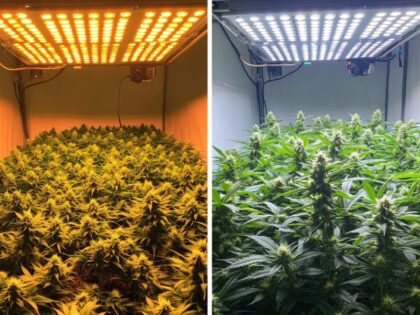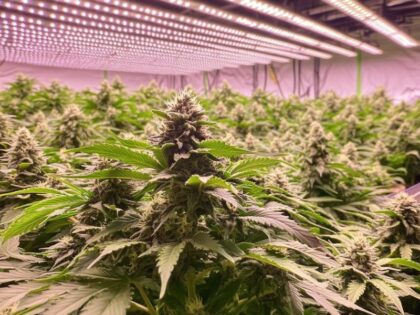How to Grow Hydroponic Cannabis – Easy Beginner’s Guide
Hydroponic cannabis is more than just a modern trend—it’s a transformative method of growing cannabis that gives cultivators unprecedented control over their crop’s environment, nutrient intake, and yield potential. Whether you’re a home grower with a few plants or a commercial cultivator aiming for maximum efficiency, hydroponic growing offers a high-performance alternative to traditional soil-based cultivation.
This comprehensive blog examines the ins and outs of hydroponic cannabis cultivation—what it is, why it’s effective, the systems used, and why it continues to attract growers from all skill levels.
Table of Contents
Are Hydroponic Systems the Best Growing Medium?
Hydroponic systems have become increasingly popular among cannabis cultivators because they remove many of the variables associated with outdoor or soil-based growing—like unpredictable weather, pests, and soil contamination.
These systems allow roots to absorb nutrients directly from a water-based solution, bypassing the need for soil altogether. This speeds up growth, increases yields, and gives growers more control over nutrient delivery.
Do I Have to Use an Air Pump?
Not all hydroponic setups require an air pump. In deep water culture (DWC) systems, an air pump is essential because plant roots are constantly submerged and need a constant supply of oxygen. However, other systems—like wick, drip, ebb and flow, and nutrient film technique (NFT)—don’t always require one, as they either expose the roots to air intermittently or provide passive oxygenation.
How Do I Keep the Plant Suspended With No Soil?

Even though soil is absent, plants still need physical support. That’s where hydroponic growing mediums come in. Common mediums include:
- Clay Pebbles: Lightweight, porous, and reusable.
- Coco Coir: A coconut husk derivative that offers excellent water retention.
- Rockwool: A popular choice for seed starting and root development.
These mediums support the plant while also allowing excellent water and nutrient flow.
Best Nutrients for Hydroponic Cannabis Growing
Hydroponic cannabis requires a carefully balanced nutrient mix. The foundational trio is known as NPK:
- Nitrogen (N): Promotes leaf and stem growth.
- Phosphorus (P): Encourages root development and flower production.
- Potassium (K): Regulates overall plant health and water uptake.
In addition, micronutrients like magnesium, calcium, sulfur, and iron are vital for optimal growth and preventing deficiencies.
How Do I Know I’m Using the Correct Nutrient Solution?
Hydro growers must monitor and adjust their nutrient solution based on plant growth stages. Here’s a quick breakdown:
- Seedling Stage: Light nutrient mix with higher nitrogen.
- Vegetative Stage: Increased nitrogen for leafy growth.
- Flowering Stage: Higher phosphorus and potassium for bud development.
A TDS (total dissolved solids) or EC (electrical conductivity) meter can help ensure your nutrient concentrations are on point. It’s also critical to monitor pH levels—optimal range for hydroponic cannabis is 5.5–6.5.
Why Should I Grow Hydroponic Cannabis?
Hydroponic cannabis appeals to growers for many reasons:
- Controlled Environment: Minimal weather and pest interference.
- Increased Yield: Direct nutrient delivery speeds up growth.
- Water Efficiency: Less waste compared to soil grows.
- Cleaner Process: Less mess, fewer pests, and no soil-borne diseases.
While it may have a steeper learning curve and a higher upfront cost, the long-term rewards—faster growth and bigger harvests—make hydroponics worth examining.
Getting Started
Beginners can start with a basic deep water culture (DWC) system. It’s one of the simplest setups and a great entry point.
A 5-6 plant DWC system might cost around $100 to start, and you can build more complex setups over time. Premade systems are available or you can build your own. Just remember—patience, research, and constant monitoring are your best tools for success.
Control Your Environment
Hydroponic cannabis cultivation gives you full control over variables like:
- Light exposure
- Water quality
- Nutrient balance
- Temperature
- Humidity
You’re also able to monitor and observe root development directly, helping you catch problems early. However, this level of control means more responsibility—hydro grows are less forgiving than soil if you make a mistake.
Save Time and Space
Hydroponics is space-efficient. Since roots don’t need to spread out to find nutrients, you can grow more plants in a smaller area.
Plants also mature faster, allowing for multiple harvests per year depending on your strain. And because nutrient delivery is more precise, you’ll use less fertilizer overall.
Grow Hydroponically Indoors or Outdoors

While hydroponic cannabis is typically grown indoors to optimize conditions, it’s possible to grow hydroponically outdoors—especially in greenhouses.
With proper light, temperature control, and power supply, an outdoor hydro grow can produce outstanding results while using less energy than indoor setups.
Hydroponic Cannabis Sustainability
Hydroponics is a water-wise growing method. In traditional soil grows, much of the water is lost to evaporation or runoff. Hydroponics allows you to recirculate and reuse water, dramatically reducing waste.
Eliminating soil also means reducing the need for chemical pesticides—many pests and pathogens originate from soil.
Is Nutrient Delivery Better With Hydroponic Growing?
Absolutely. Think of it like this:
- Soil: Cannabis gets nutrients like eating food—it’s broken down and absorbed slowly.
- Hydroponics: Plants receive nutrients like an IV drip—fast, efficient, and targeted.
This leads to quicker growth and larger, more consistent yields—if done correctly.
Are Hydroponic Plants Better Than Soil Plants?
Hydroponic cannabis plants typically:
- Grow faster
- Yield more
- Face fewer soil-related pest issues
- Require less space
While soil has its own benefits (especially in flavor and terpene expression, according to some), hydroponics wins when it comes to efficiency, space use, and raw production.
Why Do Some Growers Still Prefer Soil?
Not everyone is sold on hydroponics. Reasons include:
- Cost: Hydro setups can be expensive.
- Complexity: Systems require maintenance and monitoring.
- Nostalgia/Natural Preference: Some growers enjoy the feel of working with soil.
- Learning Curve: Mistakes are more forgiving in soil.
Ultimately, the best medium is the one that matches your goals, budget, and experience.
Hydroponic Cannabis Methods
There are multiple ways to grow hydroponic cannabis:
Wick System
- Passive system
- Uses a wick (like rope) to draw water up from a reservoir into the grow tray
- Great for beginners; low-maintenance and requires no electricity
Ebb and Flow (Flood and Drain)
- Active system
- Uses a timer to flood and drain the root zone periodically
- Delivers oxygen and nutrients in cycles, promoting healthy roots
- Affordable and beginner-friendly
Other popular systems include:
- Drip Systems
- Nutrient Film Technique (NFT)
- Aeroponics
Each system has pros and cons depending on your space, budget, and goals.
Preventing Root Rot in Hydro Grows
Root rot is a common hydroponic issue caused by:
- Poor oxygenation
- Warm water temperatures
- Pythium fungus
To prevent root rot:
- Keep water temperature below 72°F (22°C)
- Use an air pump to oxygenate water
- Keep your reservoir clean
- Avoid overwatering
- Use beneficial microbes if needed
Healthy white roots are a sign your system is working well. Brown, mushy roots? It’s time to act fast.
Will Hydro Grows Produce Larger Yields?

Yes, and often significantly so. Controlled environments mean fewer setbacks and consistent growth rates.
By avoiding issues like:
- Fluctuating outdoor temperatures
- Inconsistent watering
- Soil-borne pests
- Poor nutrient uptake
…your plants can thrive and produce more, faster.
Experienced growers regularly report larger buds, denser trichomes, and multiple harvests per year using hydroponic setups.
Final Thoughts: Why Hydroponic Cannabis Is Worth Trying
Hydroponic cannabis may seem intimidating at first, but for those who put in the effort, the rewards can be outstanding. With tighter environmental control, faster growth cycles, and increased yields, it’s no surprise that more cannabis cultivators are shifting from soil to soilless systems.
And with the growing availability of plug-and-play hydroponic kits, even beginners can get started with minimal hassle.
Whether you’re growing for personal use or commercial purposes, hydroponics represents the future of cannabis cultivation—cleaner, faster, and more efficient than ever before.
FAQ
Do hydroponic cannabis plants taste different than soil-grown?
Some connoisseurs claim soil-grown cannabis offers a richer terpene profile. However, with the right nutrient balance, hydro plants can produce comparable flavors and potency.
How long does hydroponic cannabis take to grow?
Typically 25–30% faster than soil. You can complete a grow in as little as 8–10 weeks depending on the strain.
Can I grow organic cannabis hydroponically?
It’s possible, but trickier. Organic hydroponics often requires special bio-based nutrient solutions and careful microbial balancing.
Is hydroponic growing legal?
Hydroponics is just a method of growing. The legality of the cannabis itself depends on your state or country’s laws.
Related Posts
Drying Cannabis: 7 Expert Steps for Maximum Quality
How to Find the Best Feminized Seeds: 7 Top Qualities
The Top 5 Reputable Seed Banks in the USA for Cannabis Cultivators
CATEGORIES
Best Selling Seeds











